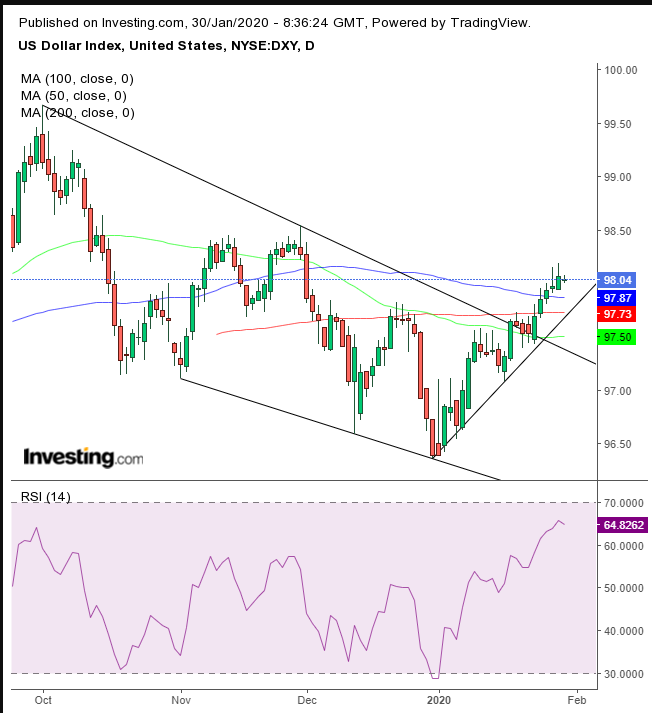Although investors had little expectation the Fed would change its trajectory for the year, yields have now extended their coronavirus selloff to the lowest since Oct. 9.
In fact, according to CME Group, the odds that a rate cut may be on its way rose from 58% on Tuesday to 69% after the Fed decision.
So what changed?
A second read by the central bank revealed a downgrade in household spending, from “strong” to “moderate,” subtly pointing out that retail sales are not as robust as expected. This may come as a shock, after stronger-than-expected consumer sentiment just a day earlier.
And there was something else too. The Fed deleted the word “near” from its expectation for the return of inflation to its 2% target — indicating the bank is disappointed with inflation.

Accordingly, the dollar — while advancing for the fifth day — closed well off its highs. Today, it's fluctuating between a decline and a flat price.
Bulls should be hoping for a decline. And indeed, a drop is badly needed after the dollar's rapid advance, along with its upside breakout of the falling channel from the Oct. 1 high and the leap over all the major MAs. A fall would constitute a return move, as investors take out profits, to retest the resistance-to-support reversal of the broken falling channel.
The RSI has reached its most overbought condition since Sept. 3, which preceded the 3.4% drop since the Oct .1 high and the Dec. 31 low.
Trading Strategies
Conservative traders would wait with a long for a full pullback to the breakout 97.50 area and then wait for support confirmation, with a close back above the 200 DMA.
Moderate traders would be happy with a return move for the close entry point, but not necessarily for proof of a reversal.
Aggressive traders may enter a contrarian short, counting on a correction, with a tight stop-loss.
Trade Sample
